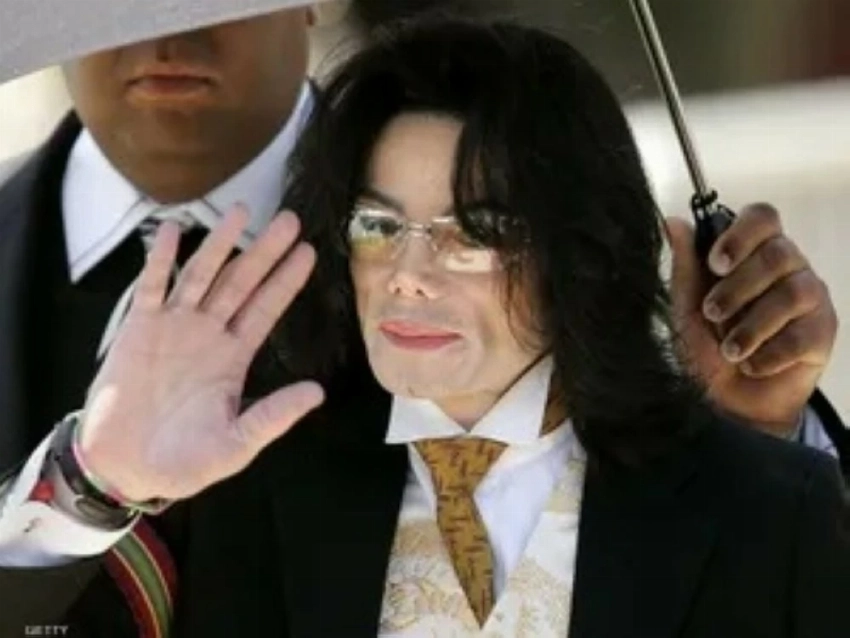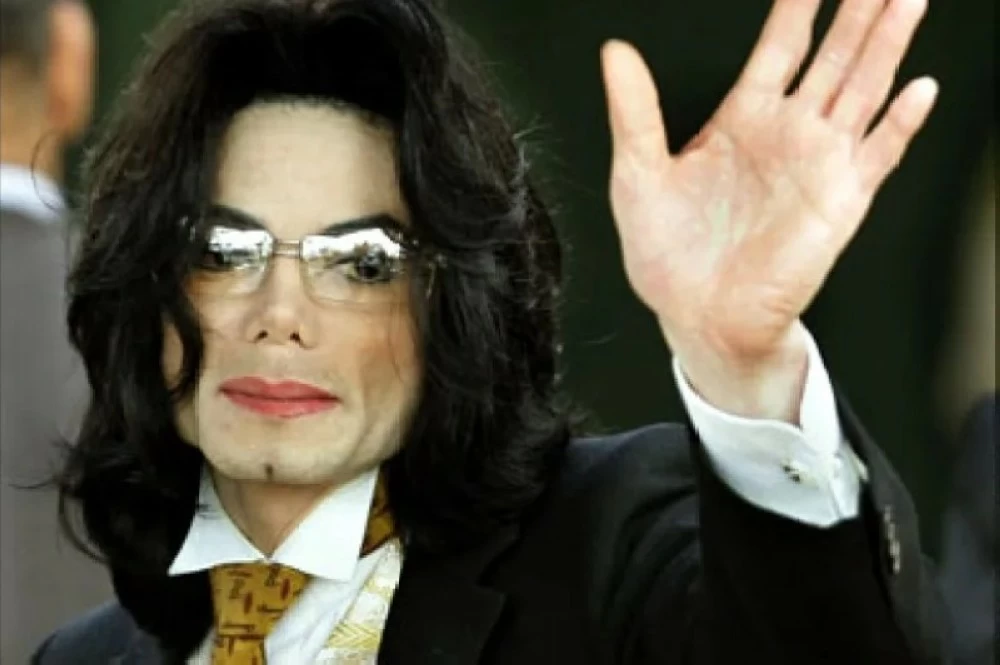بعد 16 عاماً على رحيل «ملك البوب» مايكل جاكسون في يونيو 2009، عاد تقرير تشريح جثته إلى الواجهة كاشفاً طبقات خفية من معاناته الصحية، التي ظل النجم العالمي يحرص على إخفائها عن الجمهور وعن كثير من المحيطين به.
التقرير، الذي أوردت تفاصيله صحيفة بريطانية ونقلته وسائل إعلام دولية، أظهر أن جسد جاكسون كان يحمل علامات صراع طويل مع الألم، والأرق، والاعتماد المكثف على الأدوية، إلى جانب آثار الحميات القاسية والعمليات التجميلية المتكررة.

وزن متدنٍ وحمية منهكة
أوضح تقرير الطب الشرعي أن وزن جاكسون لحظة وفاته لم يتجاوز نحو 55 كيلوغراماً، وهو رقم يعكس نحافة مفرطة لا تتناسب مع رجل في الخمسين من عمره. هذا الوزن المنخفض رُبط بسنوات من الحميات القاسية، واضطرابات محتملة في الأكل، وسعي دائم للحفاظ على مظهر نحيل تحت ضغط الشهرة والأضواء.
كما أشار التقرير إلى أن جاكسون كان يكتفي بوجبة صغيرة واحدة يومياً في الفترة الأخيرة من حياته، وهي عادة غذائية زادت من إنهاك جسده وأضعفت بنيته العضلية.

جسد مثقّل بالحقن والندوب
واحدة من أكثر النقاط الصادمة في التقرير كانت ما كشفه الفحص عن آثار طعنات متعددة في الذراعين والوركين والفخذين والكتفين، يُعتقد أنها ناتجة عن حقن مسكنات قوية على فترات متقاربة، في محاولة لمواجهة أوجاع مزمنة وأرق مستمر.
ولم يُعثر في معدته على أي آثار لأدوية فموية وقت الوفاة، ما يعزز الانطباع بأنه كان يعتمد بشكل شبه كامل على الحقن الوريدية والعضلية لتناول أدويته، بعيداً عن الأشكال التقليدية للعلاج.
وجه أعادت تشكيله الجراحة التجميلية
التقرير أشار كذلك إلى وجود ندوب واضحة خلف الأذنين وعلى جانبي الأنف، اعتبرها خبراء الطب الشرعي دليلاً على خضوع جاكسون لعدد كبير من العمليات التجميلية خلال مسيرته الفنيّة. هذه الآثار تعيد تسليط الضوء على التغييرات الشكلية الكبيرة التي طرأت على ملامحه مع مرور السنوات، وما قد يكون رافقها من آلام وتعقيدات طبية.

سرية مفرطة حول وضعه الصحي
بحسب ما نُقل عن الخبراء، فإن جاكسون كان شديد التحفظ بشأن حالته الصحية، ويُقال إنه منع بعض الأطباء في أوقات معينة من فحص أجزاء محددة من جسده. هذا الحرص المبالغ فيه على إخفاء تفاصيل وضعه الطبي ساهم في تغذية الشائعات والتكهنات لسنوات، قبل أن يضع تقرير التشريح جزءاً من الصورة في إطار أوضح.
جسد ضعيف وجرعة قاتلة من البروبوفول
النتائج التي كشفها التقرير تعطي سياقاً جديداً لفهم ظروف وفاة مايكل جاكسون، إذ تشير إلى أن جسده كان في حالة ضعف شديد نتيجة الحمية والآلام المزمنة وكثافة تعاطي الأدوية الموصوفة. هذا الضعف جعل تأثير جرعة زائدة من مخدر «البروبوفول» أكثر خطورة، وهو العقار الذي أودى بحياته داخل منزله في لوس أنجلوس.
ويرى مختصون أن تداخل هذه العوامل –من إرهاق جسدي ونفسي، واعتماد كبير على المسكنات، وضغط مهني وشهرة عالمية– رسم مساراً صحياً هشاً انتهى بتلك النهاية المفجعة.
ثمن الشهرة على الجسد والنفس
إعادة قراءة تقرير التشريح بعد مرور كل هذه السنوات لا تفتح فقط ملف وفاة مايكل جاكسون من جديد، بل تعيد أيضاً طرح سؤال أوسع حول الثمن الصحي والنفسي للشهرة الطاغية، وكيف يمكن أن يتحول السعي إلى الكمال الفني والمظهري إلى رحلة استنزاف قاسية للجسد والروح، حتى بالنسبة لواحد من أشهر نجوم الموسيقى في التاريخ.
Sixteen years after the departure of the “King of Pop” Michael Jackson in June 2009, the report of his autopsy has resurfaced, revealing hidden layers of his health struggles that the global star was keen to keep from the public and many of those around him.
The report, detailed by a British newspaper and circulated by international media, showed that Jackson’s body bore signs of a long struggle with pain, insomnia, and a heavy reliance on medications, alongside the effects of strict diets and repeated cosmetic surgeries.

Low Weight and Exhausting Diet
The forensic report clarified that Jackson’s weight at the time of his death did not exceed about 55 kilograms, a figure that reflects extreme thinness not suitable for a man in his fifties. This low weight was linked to years of strict diets, potential eating disorders, and a constant pursuit to maintain a slim appearance under the pressure of fame and the spotlight.
The report also indicated that Jackson was subsisting on just one small meal a day in the later part of his life, a dietary habit that further exhausted his body and weakened his muscle structure.

A Body Burdened with Injections and Scars
One of the most shocking points in the report was the examination revealing multiple puncture marks on the arms, hips, thighs, and shoulders, believed to be the result of frequent injections of powerful painkillers in an attempt to cope with chronic pain and persistent insomnia.
No traces of oral medications were found in his stomach at the time of death, reinforcing the impression that he was relying almost entirely on intravenous and intramuscular injections for his medications, away from traditional forms of treatment.
A Face Reshaped by Cosmetic Surgery
The report also noted the presence of clear scars behind the ears and on the sides of the nose, which forensic experts considered evidence of Jackson undergoing numerous cosmetic surgeries throughout his artistic career. These marks shed light on the significant physical changes his features underwent over the years, along with the potential pain and medical complications that accompanied them.

Excessive Secrecy About His Health Condition
According to what experts conveyed, Jackson was very secretive about his health condition, and it is said that he prevented some doctors at certain times from examining specific parts of his body. This excessive caution in hiding details of his medical status contributed to fueling rumors and speculations for years, before the autopsy report provided part of the picture in a clearer frame.
A Weak Body and a Fatal Dose of Propofol
The findings revealed by the report provide a new context for understanding the circumstances surrounding Michael Jackson’s death, as they indicate that his body was in a state of severe weakness due to dieting, chronic pain, and a high intake of prescribed medications. This weakness made the impact of an overdose of the anesthetic “propofol” more dangerous, the drug that claimed his life in his home in Los Angeles.
Specialists believe that the interplay of these factors – physical and psychological exhaustion, heavy reliance on painkillers, and professional pressure along with global fame – charted a fragile health path that ended in that tragic conclusion.
The Price of Fame on Body and Soul
Revisiting the autopsy report after all these years not only reopens the file on Michael Jackson’s death but also raises a broader question about the health and psychological toll of overwhelming fame, and how the pursuit of artistic and aesthetic perfection can transform into a harsh draining journey for the body and soul, even for one of the most famous music stars in history.

